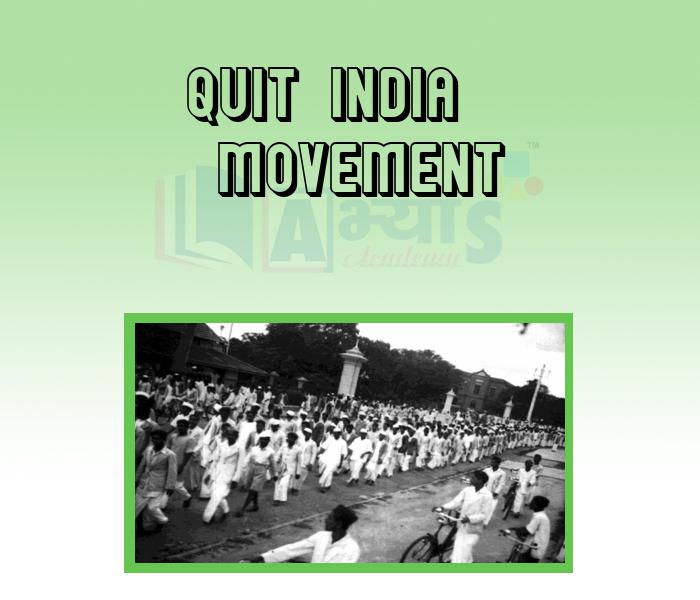Quit India Movement











Quit India Movement
TOWARDS QUIT INDIA MOVEMENT:
Following the withdrawal of the CDM, Gandhi wanted to focus upon his village reconstruction programme and Harijan Campaign while many other party members wanted to fight the elections. In October 1934, Gandhi resigned from the Indian National Congress. In the Elections to the Central Legislative Assembly in November 1934, the Congress won 45 seats out of the 75. The government announced the holding of elections to the provincial legislatures in February 1937 under the Government of India Act 1935, which promised provincial autonomy. At the Lucknow session (April 1936), the Congress decided to contest them. The Congress framed a detailed political and economic programme at the Faizpur session (December 1936) under the Presidentship of Jawaharlal Nehru.
A resolution on the ______________________ was passed in the meeting of the Congress Working Committee held on 14 July 1942 at Wardha. | |||
| Right Option : B | |||
| View Explanation | |||
Which of the following was arrested in the beginning of Quit India Movement on 9 August 1942 ? | |||
| Right Option : D | |||
| View Explanation | |||
Which of the following are correct : (a) In October 1934, Gandhi resigned from the Indian National Congress. (b) In the Elections to the Central Legislative Assembly in November 1934, the Congress won 45 seats out of the 75. | |||
| Right Option : C | |||
| View Explanation | |||
Students / Parents Reviews [10]
One of the best institutes to develope a child interest in studies.Provides SST and English knowledge also unlike other institutes. Teachers are co operative and friendly online tests andPPT develope practical knowledge also.

Aman Kumar Shrivastava
10thMy experience with Abhyas is very good. I have learnt many things here like vedic maths and reasoning also. Teachers here first take our doubts and then there are assignments to verify our weak points.

Shivam Rana
7thMy experience was very good with Abhyas academy. I am studying here from 6th class and I am satisfied by its results in my life. I improved a lot here ahead of school syllabus.

Ayan Ghosh
8thBeing a parent, I saw my daughter improvement in her studies by seeing a good result in all day to day compititive exam TMO, NSO, IEO etc and as well as studies. I have got a fruitful result from my daughter.

Prisha Gupta
8thAbout Abhyas metholodology the teachers are very nice and hardworking toward students.The Centre Head Mrs Anu Sethi is also a brilliant teacher.Abhyas has taught me how to overcome problems and has always taken my doubts and suppoeted me.

Shreya Shrivastava
8thIt was good as the experience because as we had come here we had been improved in a such envirnment created here.Extra is taught which is beneficial for future.

Eshan Arora
8thIt has a great methodology. Students here can get analysis to their test quickly.We can learn easily through PPTs and the testing methods are good. We know that where we have to practice

Barkha Arora
10thAbhyas Methodology is very good. It is based on according to student and each child manages accordingly to its properly. Methodology has improved the abilities of students to shine them in future.

Manish Kumar
10thAbhyas is a complete education Institute. Here extreme care is taken by teacher with the help of regular exam. Extra classes also conducted by the institute, if the student is weak.

Om Umang
10thMy experience with Abhyas academy is very good. I did not think that my every subject coming here will be so strong. The main thing is that the online tests had made me learn here more things.
